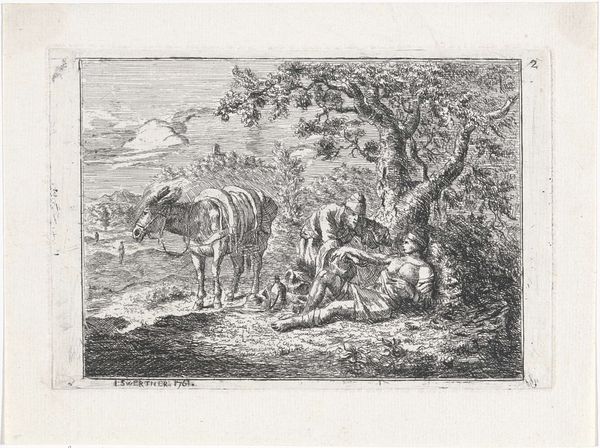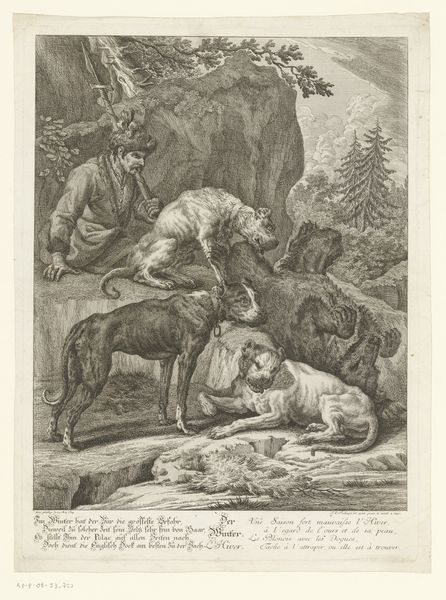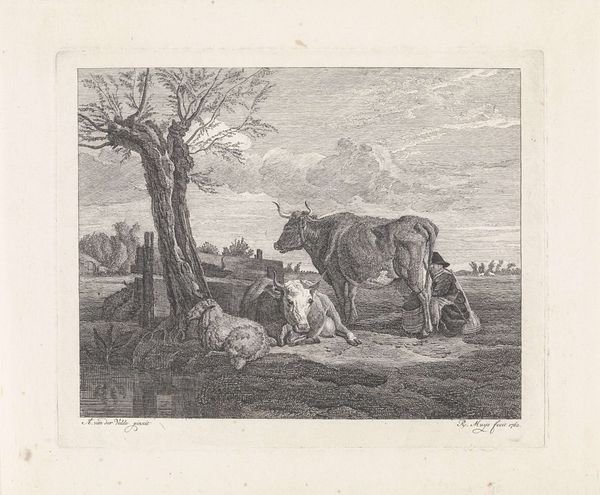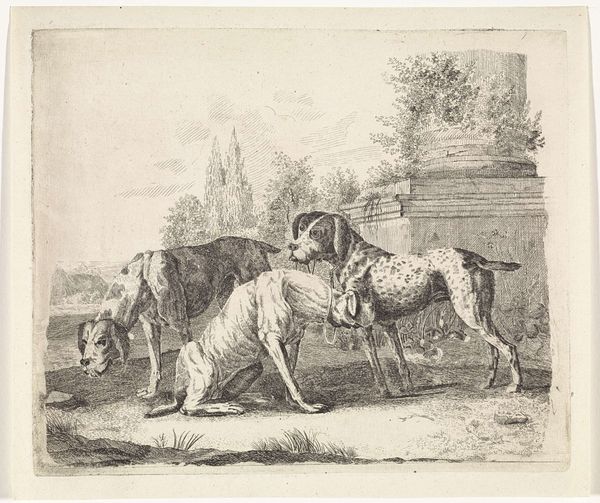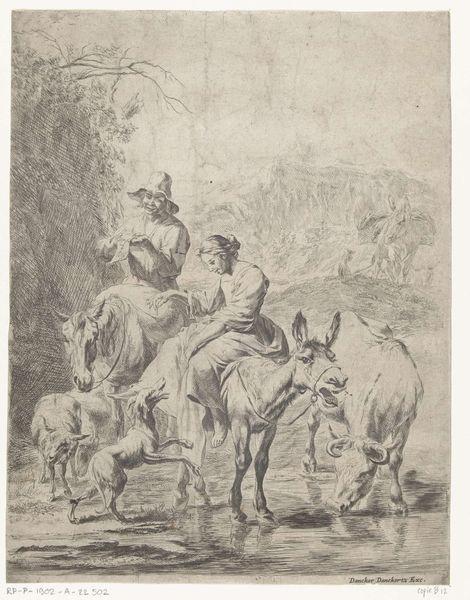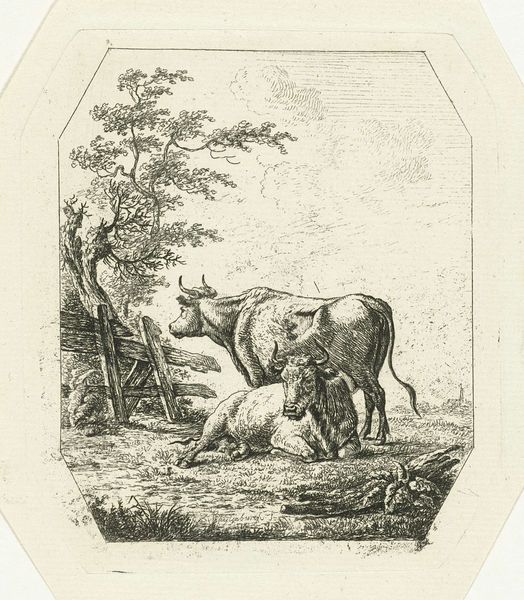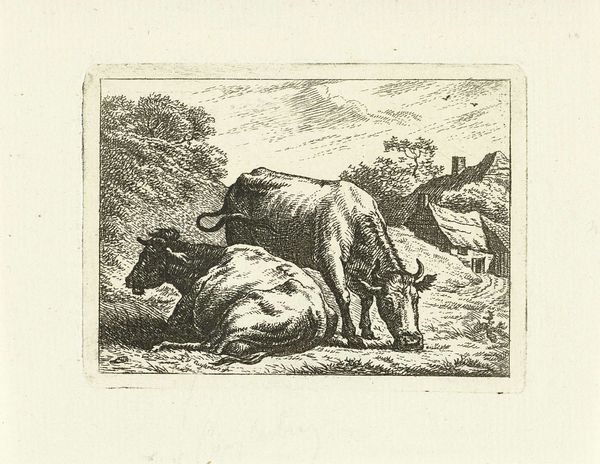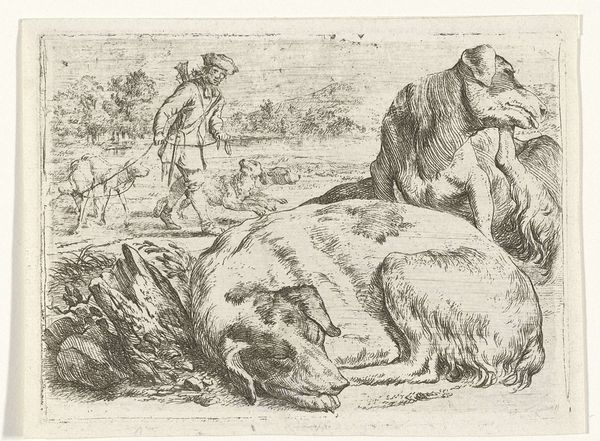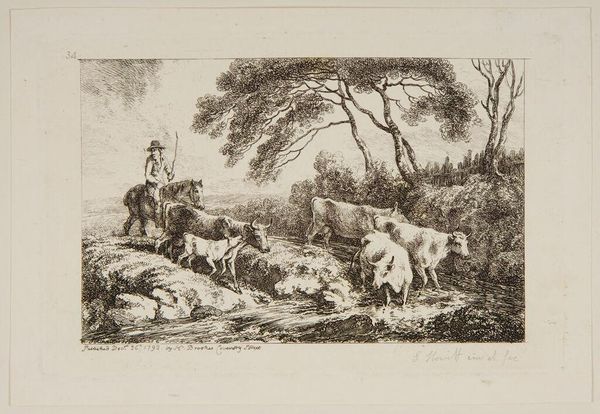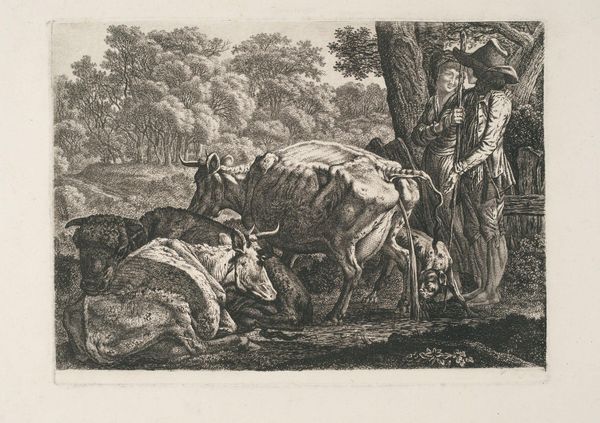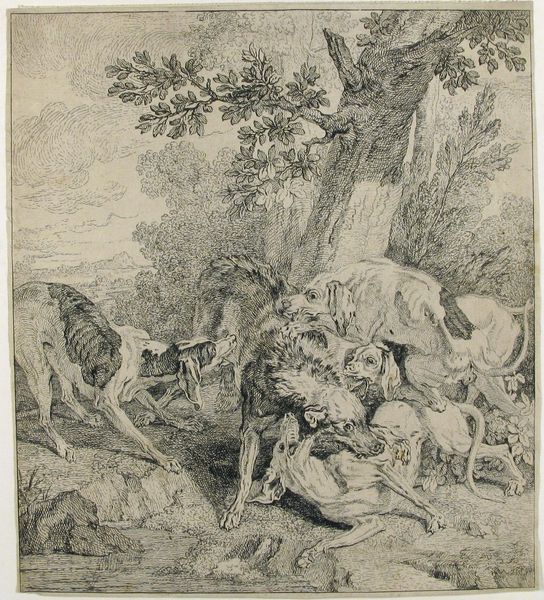
etching
#
baroque
#
dutch-golden-age
#
etching
#
landscape
#
etching
#
figuration
#
genre-painting
Dimensions: height 125 mm, width 179 mm
Copyright: Rijks Museum: Open Domain
Pieter Bodding van Laer created this etching, "Herderin te midden van geiten en schapen," a pastoral scene, during the Dutch Golden Age. Van Laer spent a decade in Rome, where he became known as "Il Bamboccio" and developed a distinctive style depicting everyday life, particularly of the lower classes. This work reflects a romanticized view of rural life. Consider how the figure of the herderin is rendered. She is at rest, surrounded by her flock, evoking a sense of peace and simplicity. The reality of rural labor, often grueling and undervalued, is notably absent. Instead, we are presented with an idealized vision, perhaps catering to the tastes of an urban, bourgeois audience. How does this representation uphold or challenge existing social hierarchies and notions of labor and leisure? Consider, too, how class and gender intersect in this image. The herderin is portrayed in a position of relative authority, yet her labor is also implicitly feminized and pastoralized. Does this image offer empowerment, or does it reinforce traditional gender roles within a class-based society?
Comments
No comments
Be the first to comment and join the conversation on the ultimate creative platform.

